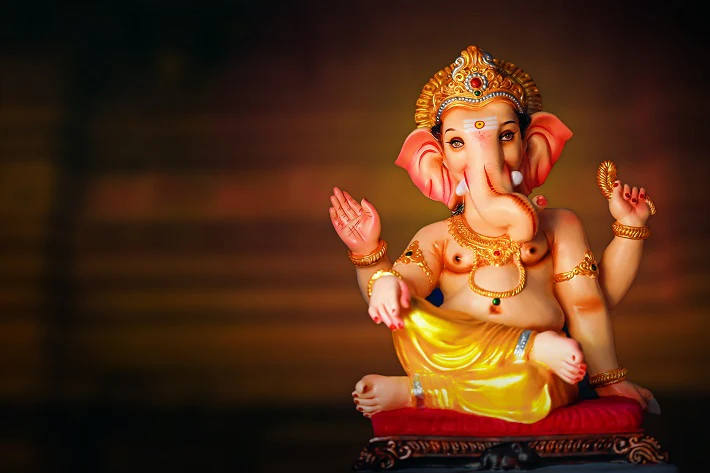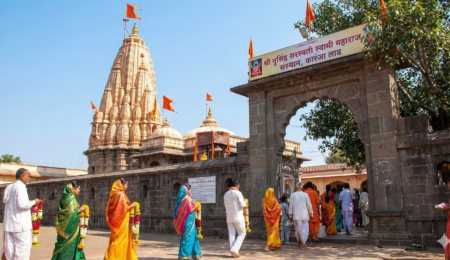Ganesh Chaturthi: History, Rituals & Celebrations in India
Ganesh Chaturthi, also known as Vinayaka Chaturthi, is one of the most popular and vibrant Hindu festivals celebrated across India, especially in Maharashtra, Karnataka, Andhra Pradesh, Tamil Nadu, and Goa. Dedicated to Lord Ganesha, the elephant-headed son of Lord Shiva and Goddess Parvati, this festival marks his birth and arrival on Earth. It is a festival that blends spirituality, culture, devotion, and community celebration.
With its colorful rituals, devotional songs, community feasts, and artistic decorations, Ganesh Chaturthi is more than a religious event, it’s a cultural phenomenon that brings people together in a spirit of unity and joy.
Historical Background
The worship of Lord Ganesha dates back to ancient times, with references found in sacred Hindu texts like the Rigveda, Yajurveda, and Atharvaveda. The Puranas narrate that Ganesha was created by Goddess Parvati from clay and given life. When Lord Shiva unknowingly beheaded him, he later replaced his head with that of an elephant, blessing him with the status of being the first deity to be worshipped before any auspicious occasion.
However, the public celebration of Ganesh Chaturthi gained prominence during the Maratha reign, especially under Chhatrapati Shivaji Maharaj, who promoted it to instill a sense of nationalism and unity among his people.
In modern India, the festival was revived and transformed into a grand public event by Lokmanya Bal Gangadhar Tilak in 1893. Tilak used it as a means to unite Indians during the struggle for independence, bringing people from all walks of life together under the pretext of worship, thereby defying British-imposed bans on public gatherings.
Spiritual Significance of Lord Ganesha
Lord Ganesha is revered as the remover of obstacles, the god of beginnings, and the patron of wisdom and intellect. He is worshipped before any major venture, whether it’s a new business, a marriage, or the beginning of a journey.
Symbolically, Ganesha’s elephant head represents wisdom and understanding. His large ears signify the ability to listen, his small mouth suggests speaking less, and his large belly denotes the ability to digest all experiences—good or bad. His vehicle, the mouse, signifies humility and the ability to overcome desires.
Ganesh Chaturthi is not just about invoking the deity but also about internal cleansing. Devotees seek his blessings to remove inner vices like ego, anger, and greed, allowing wisdom and peace to prevail.
Key Rituals of Ganesh Chaturthi
- Ganesh Sthapana (Installation of the Idol)
- The festival begins with the installation of beautifully crafted idols of Ganesha in homes and public pandals (temporary stages).
- Before installation, the idol is consecrated through rituals and prayers.
- The idol is usually placed facing the main entrance to welcome prosperity and happiness.
- Pranapratishtha
- A special ritual performed by priests to invoke life into the idol.
- It is accompanied by chanting of mantras, bhajans, and aarti (devotional songs).
- Daily Pooja and Offerings
- Devotees perform morning and evening prayers, sing aartis, and offer modaks (sweet dumplings), laddus, coconut, jaggery, and flowers to the deity.
- Modak, believed to be Lord Ganesha’s favorite sweet, is an essential offering.
- Visarjan (Immersion of the Idol)
- The festival culminates with Ganesh Visarjan, where the idol is immersed in a body of water.
- Devotees chant “Ganpati Bappa Morya, Pudhchya Varshi Lavkar Ya” (Come back soon next year, Lord Ganesha).
- The immersion symbolizes the cycle of birth, life, and death, and the idea that everything returns to nature.
Regional Variations in Celebrations
While Ganesh Chaturthi is celebrated throughout India, the traditions vary from state to state, each adding its unique cultural touch.
Maharashtra
- Maharashtra is the epicenter of Ganesh Chaturthi celebrations.
- Cities like Mumbai, Pune, and Nagpur witness grand pandals with massive idols, cultural performances, dance processions, and aarti competitions.
- Famous Ganesh idols like Lalbaugcha Raja, Siddhivinayak, and Dagdusheth Ganapati attract millions of devotees.
Goa
- Known as Chavath in Goa, the celebration begins with families performing rituals in their ancestral homes.
- Traditionally, idols are made of clay and are eco-friendly.
- A distinctive feature is the matoli a canopy decorated with fruits, vegetables, and flowers.
Tamil Nadu
- Called Pillaiyar Chaturthi, the festival is marked by worship in homes and temples.
- Clay idols are placed on banana leaves with offerings of modakam and kudumulu.
- Temples like Ucchi Pillayar Temple in Trichy see thousands of devotees.
Andhra Pradesh and Telangana
- Celebrated with enthusiasm in cities like Hyderabad and Vijayawada.
- Public installations of large idols and cultural events are organized.
- The Khairatabad Ganesh in Hyderabad is among the tallest idols in the country.
Karnataka
- Celebrated both in homes and temples.
- Mysuru and Bengaluru host vibrant celebrations with decorations and community feasts.
- Cultural activities like music and dance shows are held at public venues.
West Bengal
- While primarily known for Durga Puja, Ganesh Chaturthi is observed in many homes, especially among Marathi and South Indian communities.
North India
- The festival is gaining popularity in Delhi, Uttar Pradesh, and Madhya Pradesh.
- Homes and temples install idols and organize community prayers and processions.
Modern-Day Celebrations and Eco-Friendly Trends
With growing awareness about environmental conservation, there has been a significant shift towards celebrating Ganesh Chaturthi in an eco-friendly manner.
- Eco-Friendly Idols
- Traditionally, idols made from Plaster of Paris (PoP) took months to dissolve in water and released harmful chemicals.
- Today, more devotees are opting for idols made of clay, natural fiber, paper-mâché, and even plantable seed-based idols.
- Artificial Tanks for Immersion
- To prevent water pollution in rivers and lakes, many cities now install artificial immersion tanks.
- This allows for respectful visarjan without harming marine ecosystems.
- Digital and Virtual Celebrations
- With changing times and especially during the pandemic, many families adopted online darshan (viewing) and virtual aarti.
- Live-streamed pandal visits, online pooja bookings, and digital blessings became part of modern celebrations.
- Minimalistic Celebrations
- Many people now prefer intimate family-based celebrations focusing more on devotion and less on extravagance.
- This aligns with the traditional essence of the festival while being sustainable.
Economic and Social Impact
Ganesh Chaturthi has a considerable impact on local economies. Artisans, idol makers, flower vendors, sweet shops, lighting decorators, sound engineers, and local performers depend heavily on this festival for income.
Additionally, the festival strengthens social bonds. Housing societies, schools, NGOs, and communities organize joint celebrations, fostering unity and inclusiveness across all religions and backgrounds.
Popular Dishes During Ganesh Chaturthi
Food plays an integral role in Ganesh Chaturthi celebrations. Some of the traditional dishes include:
- Modak – A sweet dumpling filled with jaggery and coconut, steamed or fried.
- Puran Poli – A sweet flatbread stuffed with lentils and jaggery.
- Ladoo – Especially besan and rava laddus offered during the aarti.
- Sundal – A South Indian dish made of boiled legumes with coconut and mustard seeds.
- Payasam – A rice or vermicelli pudding with milk and sugar.
Conclusion
Ganesh Chaturthi is more than a religious event it’s a celebration of faith, devotion, creativity, community, and environmental consciousness. While it holds deep spiritual importance in Hinduism, it also serves as a symbol of cultural unity and social harmony.
As people across India and the world chant praises of Ganpati Bappa, the festival continues to evolve blending tradition with modern values, and devotion with responsibility.
Let us celebrate Ganesh Chaturthi with love, unity, and a commitment to preserving the beauty of our planet, as we welcome Lord Ganesha into our hearts and homes.




Leave a Comment